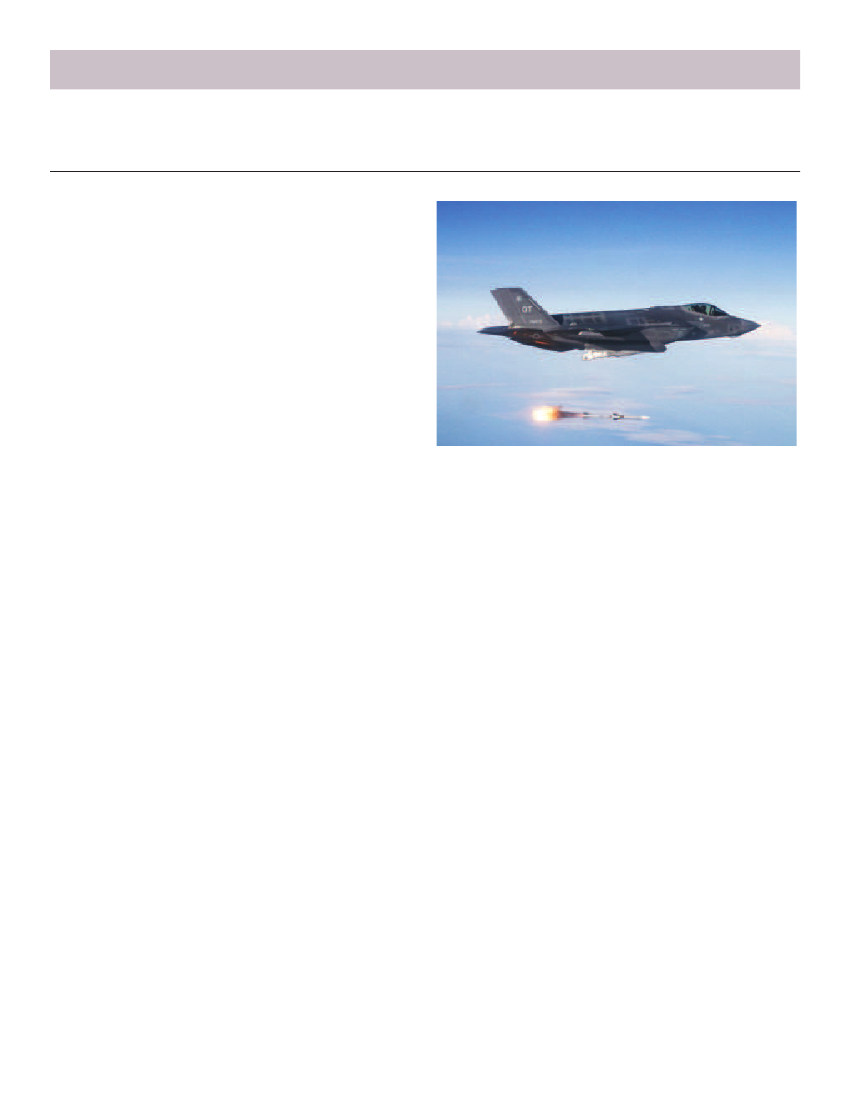
FY18 DOD PROGRAMS
F-35 Joint Strike Fighter (JSF)
Executive Summary
Programmatics
• Block 3F Development
- The program completed System Design and Development
(SDD) flight testing in April 2018, but continued testing
new modernization increments of software to address open
deficiencies and improve performance.
- The program and stakeholders reviewed open deficiencies
between May and July, re-categorizing many of the 102
Category 1 deficiencies (as of May 2018) to Category 2,
leaving 13 open Category 1 deficiencies for entry into
IOT&E, which later became 15.
• IOT&E Readiness
- The program focused on preparations for IOT&E
readiness throughout FY18.
- The Defense Acquisition Executive certified the program
as ready for entry into formal IOT&E, provided eight
remaining readiness requirements are met prior to the start
of for-score events.
- DOT&E verified readiness and approved the F-35 IOT&E
Test Plan on December 3, 2018.
- The Joint Strike Fighter (JSF) Operational Test Team
(JOTT) began formal IOT&E open-air testing in
accordance with the plan on December 5, 2018.
• Continuous Capability Development and Delivery (C2D2)
- The JSF Program Office (JPO) and Lockheed Martin
began to transition the development effort from delivering
Block 3F capabilities in the SDD contract to a more rapid
development, testing, and fielding cycle for additional
capabilities in Block 4, and to address deficiencies carried
over from SDD.
- DOT&E considers the current C2D2 schedule to be high
risk due to the large amount of planned capabilities to be
delivered in 6-month increments.
Operational E ectiveness
• Operational Testing
- The JOTT began conducting pre-IOT&E early test events
for score in January 2018 with cold weather testing,
followed by additional testing starting in April, including
two-ship scenarios, deployments, and weapons testing.
• Mission Data Load (MDL) Development and Testing
- The U.S. Reprogramming Laboratory (USRL)
demonstrated the capability to create functioning MDLs
for Block 3F and earlier blocks during SDD; however,
it still lacks adequate equipment to be able to fully test
and optimize MDLs under stressing conditions to ensure
adequate performance against current and future threats.
- Significant additional investments, well beyond the
current upgrades to the signal generator channels and
reprogramming tools, are required now for the USRL to
support F-35 Block 4 C2D2 MDL development.
Operational Suitability
• Autonomic Logistics Information System (ALIS)
- The program completed fielding of ALIS 2.0.2.4 in early
CY18 and focused on testing the next iteration of the
software, version 3.0.1.
- Two additional versions of ALIS 3.0.1 software were
developed and tested – versions 3.0.1.1 and 3.0.1.2 – to
address deficiencies before delivery to fielded units.
• Cybersecurity Operational Testing
- During CY18, the JOTT assessed ALIS version 3.0, F-35
training systems, and the ALIS-to-shipboard network
interface onboard a nuclear powered aircraft carrier.
- Cybersecurity testing in 2018 showed that some of the
vulnerabilities identified during earlier testing periods still
had not been remedied.
- Limited cybersecurity testing of the air vehicle is planned
during IOT&E; more testing will be needed.
• Availability, Reliability, and Maintainability
- There was no improving trend in fleet aircraft availability
- Fleet-wide average availability is below program target
value of 60 percent and well below planned 80 percent
needed for efficient conduct of IOT&E.
- The trend in fleet availability has been flat over the past 3
years; the program’s reliability improvement initiatives are
still not translating into improved availability.
- Reliability and maintainability metrics defined in the JSF
Operational Requirements Document are not meeting
interim goals needed to reach requirements at maturity.
Live Fire Test and Evaluation (LFT&E)
• In FY18, Lockheed Martin completed the Vulnerability
Assessment Report and the Consolidated LFT&E Report.
These reports do not include results from Electromagnetic
Pulse (EMP) or gun lethality testing, which were not
completed by the end of FY18.
JSF
23